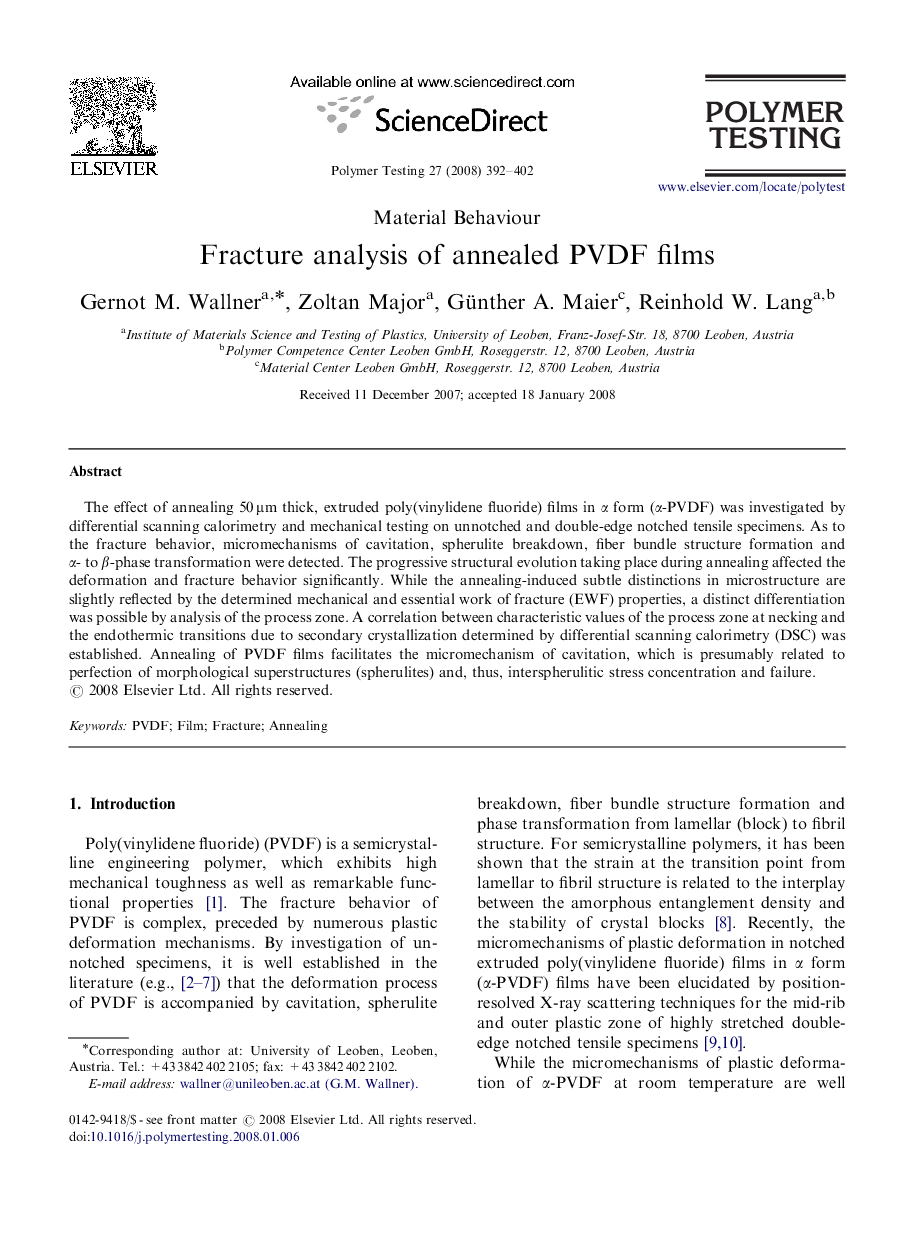| Article ID | Journal | Published Year | Pages | File Type |
|---|---|---|---|---|
| 5207698 | Polymer Testing | 2008 | 11 Pages |
Abstract
The effect of annealing 50 μm thick, extruded poly(vinylidene fluoride) films in α form (α-PVDF) was investigated by differential scanning calorimetry and mechanical testing on unnotched and double-edge notched tensile specimens. As to the fracture behavior, micromechanisms of cavitation, spherulite breakdown, fiber bundle structure formation and α- to β-phase transformation were detected. The progressive structural evolution taking place during annealing affected the deformation and fracture behavior significantly. While the annealing-induced subtle distinctions in microstructure are slightly reflected by the determined mechanical and essential work of fracture (EWF) properties, a distinct differentiation was possible by analysis of the process zone. A correlation between characteristic values of the process zone at necking and the endothermic transitions due to secondary crystallization determined by differential scanning calorimetry (DSC) was established. Annealing of PVDF films facilitates the micromechanism of cavitation, which is presumably related to perfection of morphological superstructures (spherulites) and, thus, interspherulitic stress concentration and failure.
Related Topics
Physical Sciences and Engineering
Chemistry
Organic Chemistry
Authors
Gernot M. Wallner, Zoltan Major, Günther A. Maier, Reinhold W. Lang,
